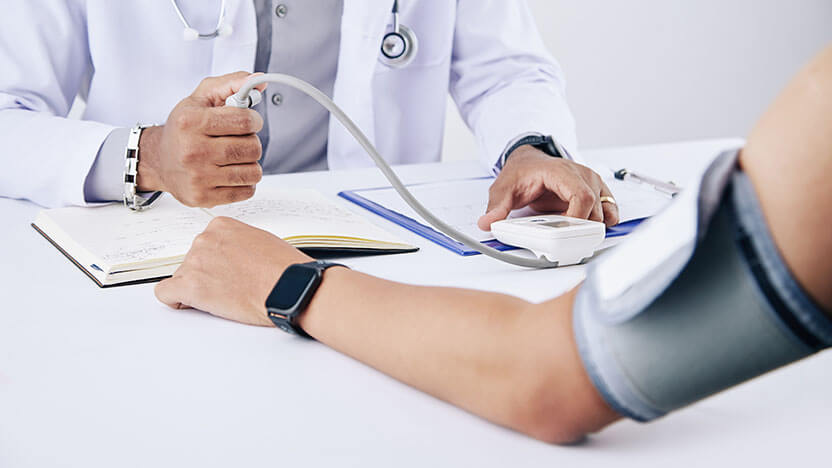EECP for Blood Pressure

EECP has a profound effect in decreasing blood pressure by improvement in blood vessel dilation, a reflection of improved vascular health.
Blood pressure is due to the contraction of cardiac muscle to push the blood into the large arteries. When the heart contracts and push the blood outside its chambers, the pressure rise within the large arteries, and this maximum raise recorded is called the systolic pressure. When the heart relaxes, the pressure in the large arteries falls, and the lowest pressure recorded is called the diastolic pressure.
However, the interpretation of systolic and diastolic pressure is not this simple as its portrait. It's not only the cardiac muscle contraction, but also the resistance offered by the large vessel also determines the blood pressure.
EECP Training Effect.
EECP treatment in the wellness program helps to improve the blood flow in the reverse direction in the arterial end during the heart relaxation period ( diastole ). It is where the blood pressure falls, and the recorded pressure is called diastolic pressure. So the vessels are exposed to increase blood flow during the heart contraction phase ( systolic pressure ) and heart relaxation phase. This twofold increase in blood flow has a profound effect on the arterial vessel wall. It stimulates the cells lining the vessel wall to secrete nitric oxide and reverse the arterial stiffness or resistance. It leads to a reduction in blood pressure naturally without drugs. This alteration of arterial stiffness resulting drop in blood pressure is called the "EECP training effect."
EECP For Hypertension.
The decrease in systolic blood pressure ranges from 6 mmHg to a maximum of 35 mmHg based on the baseline pressure. Patients with hypertension with higher baseline blood pressure had more drop in blood pressure when compared to patients with normal or mildly elevated blood pressure. The decrease in blood pressure reflects vascular health is improved after a course of EECP treatment.

